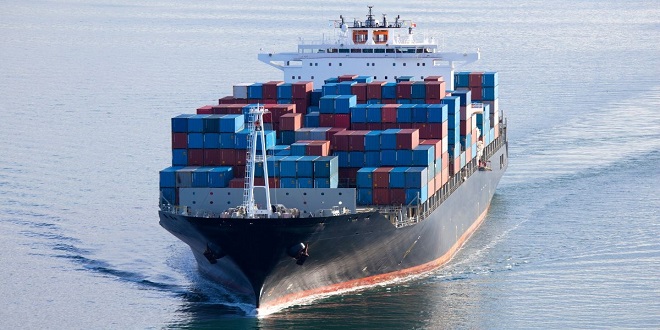Recently, global container shipping prices have been adjusted, and freight charges on some routes have declined to a certain extent. According to the FBX index released by the Baltic Shipping Exchange, on May 26, the average FBX container shipping price was 7,846 US dollars, down 29.5% from the historical high of September last year. Among them, freight rates on the China/Far East-North America West Coast route fell 45.9% from last year’s highest freight rate level, the China/Far East-North America East Coast route fell 34.3%, and the China/Far East-Northern Europe route fell 29.7%. Did the previously high shipping prices fall across the board? What’s going to change in the future? How should related companies respond?
1. Adjustments in supply and demand prompted a correction in freight prices
Currently, global container shipping prices have increased by nearly 50% compared to the same period last year, and are still at a historically high level. There are three main reasons.
1 Rhythm of demand
After the outbreak of COVID-19, global container shipping demand was rapidly suppressed, but by the time the first phase of the epidemic passed, countries had strong demand for replenishment of inventories. At the same time, the traditional peak container shipping season and fiscal and tax subsidies in the United States and other regions pushed container shipping demand to a concentrated outbreak. US freight prices rebounded sharply, and then the world’s major container shipping routes began to rise sharply.
China’s manufacturing industry chain is relatively complete, epidemic control is relatively effective, and the global manufacturing industry is further concentrated in China. Under such circumstances, the China-Europe and the US route requires more capacity, and more containers are transported from China to Europe and the United States and other parts of the world. However, the first quarter was originally the traditional low season for container shipping, and a brief adjustment in market demand prompted a correction in freight prices.
2 Effective supply
Container shipping has a high degree of standardization, large logistics volume, and long logistics chain, and is more vulnerable to the impact of the epidemic. Before the outbreak of the epidemic, the container shipping market had relatively excess capacity. After the epidemic, due to the decline in ship turnover, the effective supply of capacity was insufficient.
Currently, with the adjustment of seasonal off-season shipments and port congestion relief measures such as container delay fees, beginning to bear fruit, the congestion situation in some ports has begun to improve. Moreover, with the introduction of new containers and the efforts of shipping companies, the container shortage problem has been greatly alleviated. Therefore, the increase in effective supply levels is also an important reason driving the freight rate correction.
3 Market structure
The container shipping market is a highly concentrated market, with the market share of the top ten liner companies reaching more than 80%.
The high concentration of the container shipping market makes this round of market peaks show certain peculiarities:
First, in the early days of the epidemic, when demand in the container shipping market declined sharply, container freight prices were higher than the same period in 2018 and 2019 because the idle level of container ships was at an all-time high;
Second, the price difference between the actual carrier and the actual shipper is large. For example, according to FBX (mainly shipper quotes), freight prices on the Far East-North America route fell by about 45%, but SCFI (mainly shipping company quotes) released by the Shanghai Shipping Exchange on May 20 showed that the Shanghai-US-West route freight rates fell only 2.8% from the highest point.
2. Short-term freight rates will still operate at a high level
Next, will container shipping prices rise or fall?
According to the current container shipping market performance, market freight prices will remain high when demand is concentrated and there is a shortage of effective supply; when both occur at the same time, market freight prices may rise sharply.
Judging from the current rhythm of demand. Although the world’s ability to adapt and control the epidemic continues to increase, the epidemic will continue to recur, demand will still show intermittent closure, and domestic exports are still relatively strong, but the impact of the rhythm of demand has entered the second half.
Judging from the development of effective supply. The capacity of the global logistics supply chain is recovering, and ship turnover is constantly improving. According to a survey on China’s shipping climate by the Shanghai International Shipping Research Center, 65% of container liner companies believe that ship turnover will increase further in the second quarter.
Therefore, without other sudden factors, it should be difficult for the container shipping market to experience a large-scale rise. Coupled with the rapid growth of ship orders in the past two years, and the gradual release of effective ship capacity, there are great challenges to high freight rates in the future market.
In the first half of this year, the container shipping market was highly concentrated. Ship rents, fuel costs and crew salaries increased dramatically, and shipping companies’ operating costs rose sharply compared to previous years.
In addition to the fact that the ship operation rate has continued to be high in the past two years, and ships have a lot of demand for maintenance, etc., and shipping companies still have a lot of room to operate in stabilizing freight rates, and it is difficult for container shipping prices to be drastically adjusted. At the same time, although there is a lot of pressure to lower freight prices on Nordic and related routes due to repeated epidemics and the Russian-Ukrainian conflict, etc., it is unlikely that container shipping prices will drop sharply.
With the control of this round of the epidemic and the early arrival of the peak shipping season, there are still phased risks to the rhythm of demand and effective supply, and market freight prices are likely to rebound with the current balance of supply and demand still fragile. As a result, market freight rates will remain high in the short term.
 Pagal World
Pagal World




